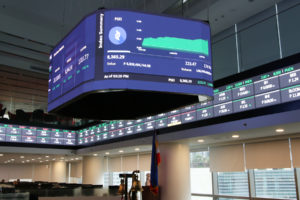When China sneezes, the Philippine catches a cold and must promptly take its medicine, including further monetary easing, which is seen to provide fresh liquidity to cushion against economic shocks.With the coronavirus outbreak expected to extract a heavy toll especially on tourism and trade receipts, economists see the Bangko Sentral ng Pilipinas (BSP) further slashing interest rates in the coming months after delivering the first 25-basis point (bp) cut for the year.
Citi economist Nalin Chutchotitham said in a Feb. 6 research note that further BSP policy rate cut should help lift investor confidence, support continued loan growth and perk up overall economic activity. Comparing the real interest policy rate of 0.85 percent (versus consensus inflation of 2.9 percent) with 14-year average of 0.38 percent, she said there was room for an additional 25 to 50-basis point rate cut “without being too accommodative.”“We now expect another 25-bp rate cut by the second quarter, and see potential for more cuts in the second half, if domestic demand and sentiment start to lose momentum,” she said.
In a Feb. 13 research note, Ruben Carlo Asuncion, Union Bank of the Philippines chief economist, and analyst Katrina Joy Javier said another 25-bp BSP rate cut might be pushed earlier than expected. “Furthermore, if and when the outbreak lasts longer than anticipated (SARS, or severe acute respiratory syndrome, outbreak of 2003 lasted seven to eight months), there may be more easing actions from the BSP to help cushion the impact on economic growth,” the UnionBank economist said.
Citi estimated that the Philippine government’s travel ban on visitors from China and its special administrative regions—which currently accounted for 26 percent of tourist arrivals—could reduce tourism revenue by 0.23 percent of gross domestic product (GDP). This is seen to translate to a 9.7-percent drop in tourist arrivals from the annual 8.1 million head count if the travel ban would last until June this year.While outbound travel is about the same as inbound travel, Citi noted that total expenditure was 40 percent higher. Thus, a decline in residents’ travel flow due to health concerns is seen potentially reducing the net impact of the contagion on current account and GDP. Furthermore, Citi noted that direct goods export exposure to China was below 10 percent, more than half of which was in import-heavy electronics.
On the imports side, Citi said delays in shipment of steel and iron imports—which accounted for 16 percent of total China imports—could gnaw at the progress of shipment of steel and iron imports. The research said this might, in turn, curb the progress of infrastructure investment, although this could be mitigated by local supply.
Citi added that it would continue to monitor the impact of the virus on global growth, which may affect business process outsourcing earnings and overseas Filipino remittances—which account for 8 percent and 8.4 percent of GDP, respectively—although household consumption growth appeared less dependent on remittances recently.The Unionbank research said if the coronavirus outbreak were to linger for three months, the country’s annual GDP growth for 2020 might settle at 6.3 percent, lower than its baseline forecast of 6.6 percent.
If the contagion lasts for about six months, Unionbank sees the country’s annual GDP growth for 2020 softening to 5.8 percent versus last year’s 5.9 percent.


